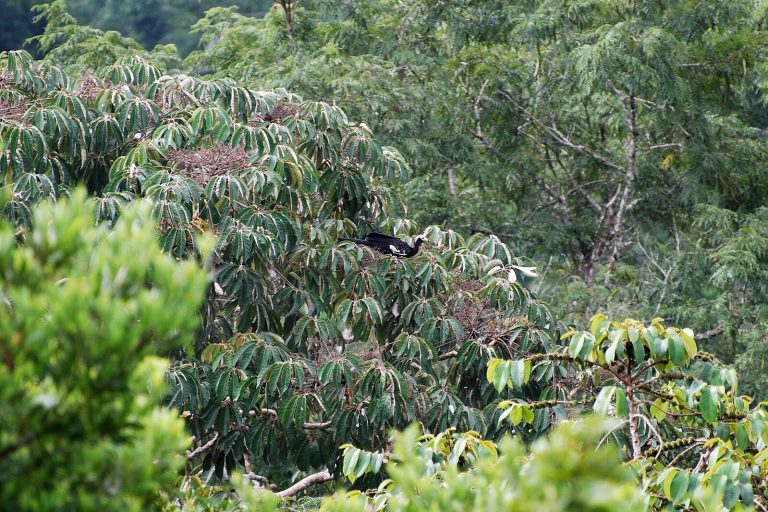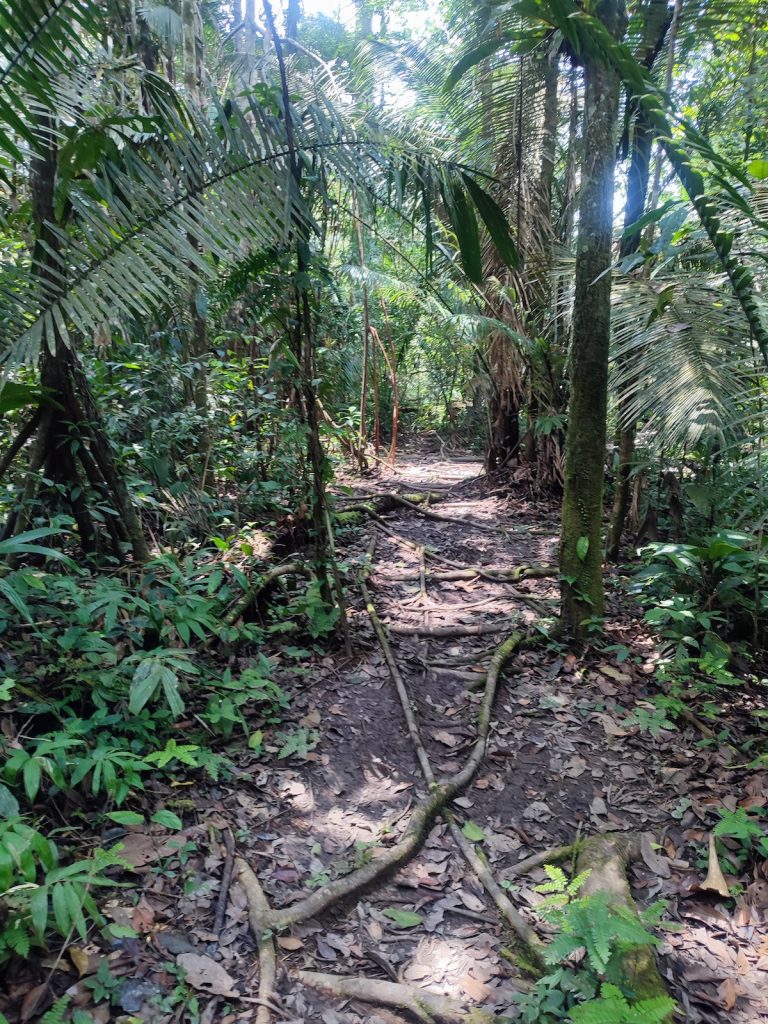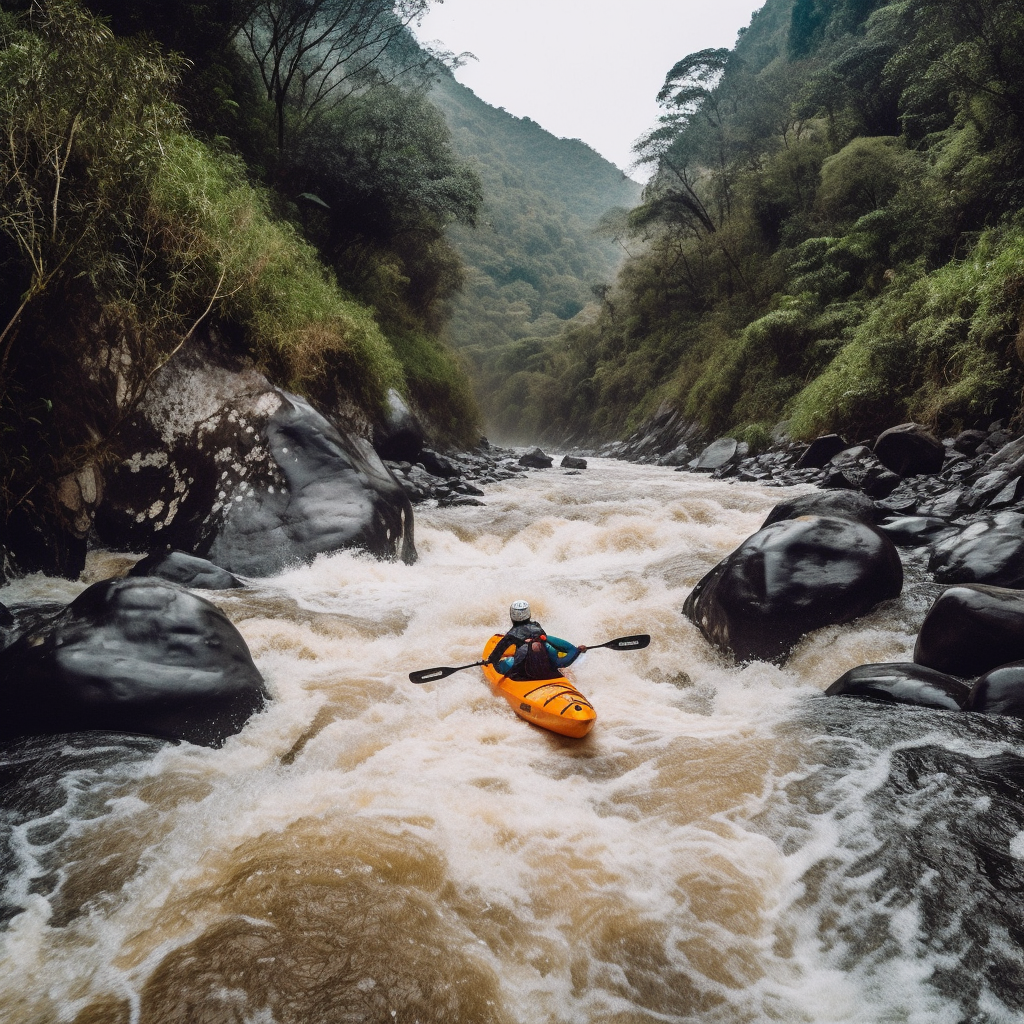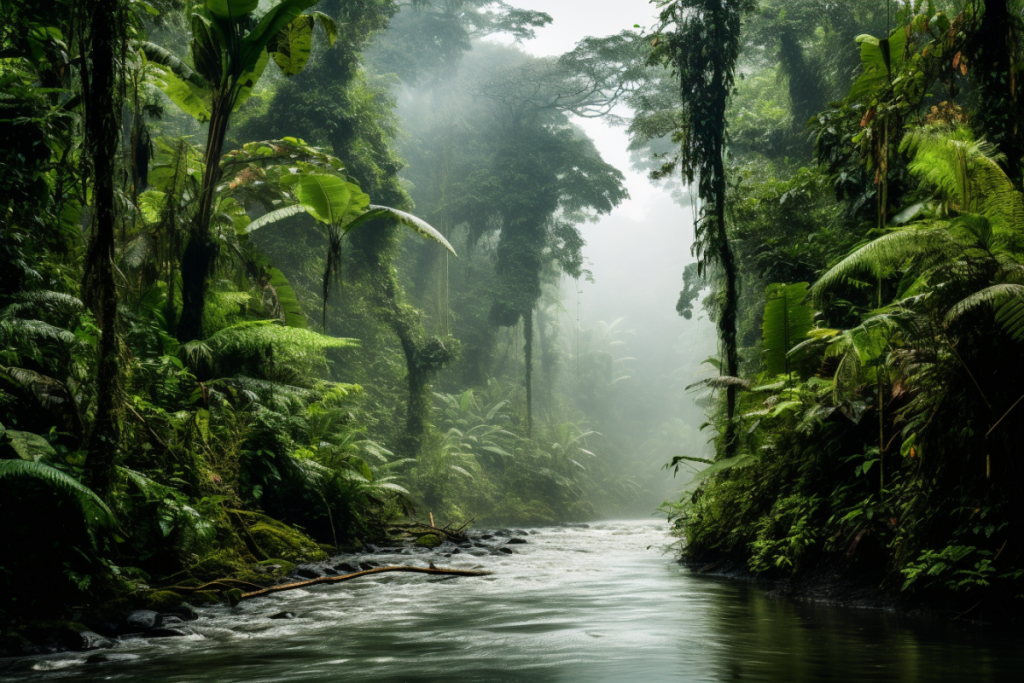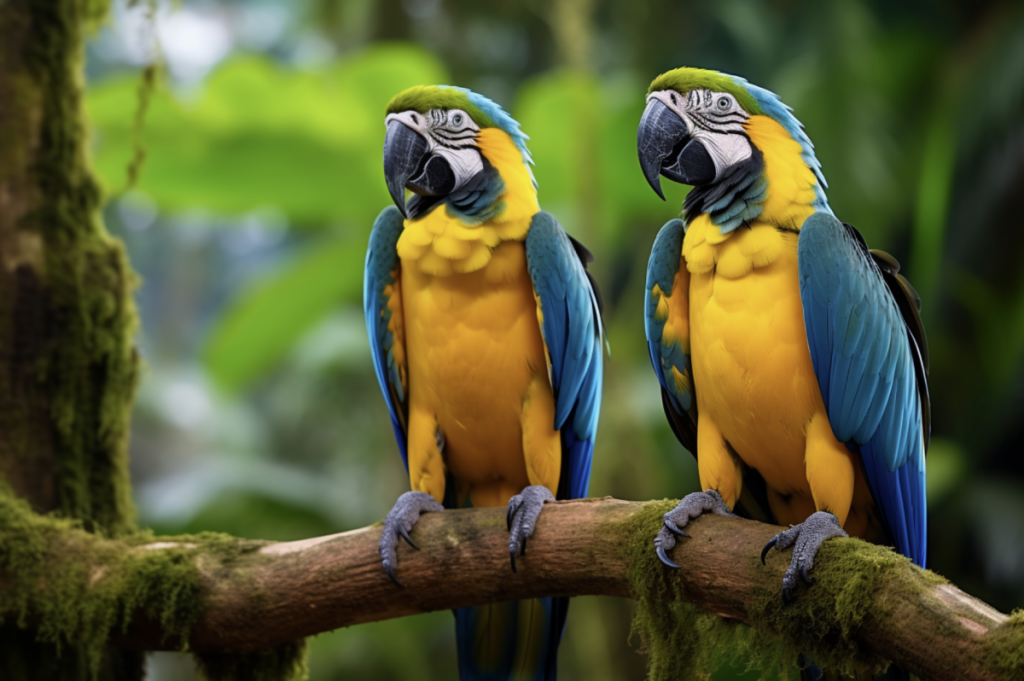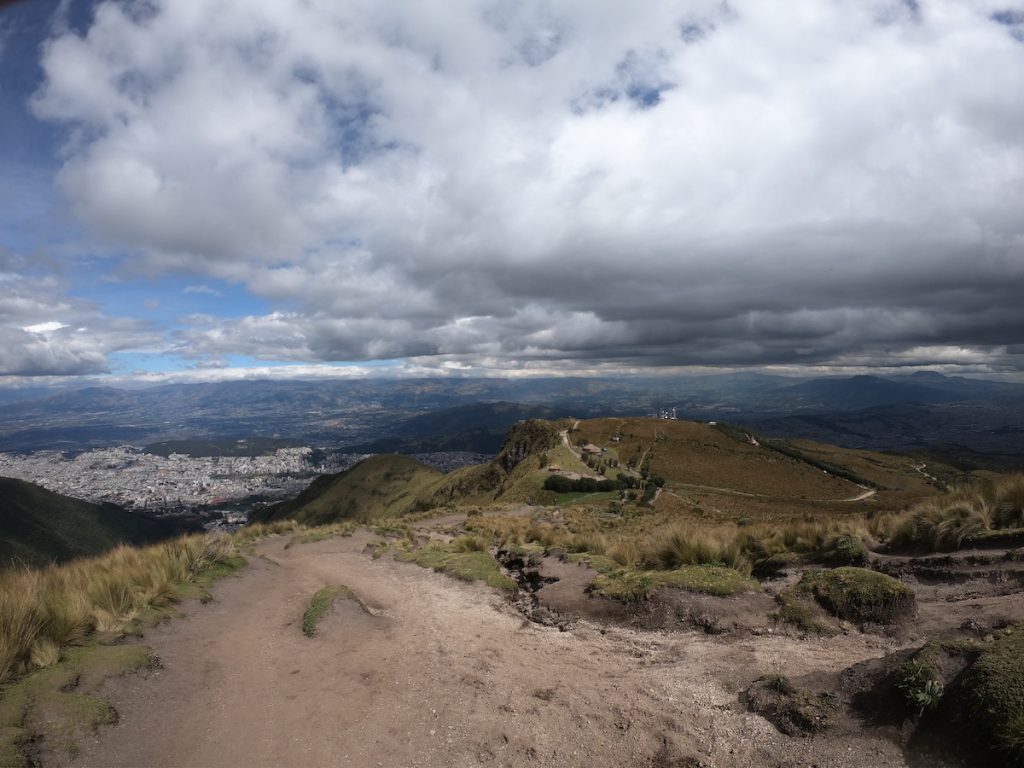Yasuni National Park, nestled in the heart of Ecuador, is one of the most biologically diverse places on Earth. Spanning over 9,800 square kilometers, this incredible Ecuadorian national park includes the lowland Amazon rainforest, sprawling rivers, and indigenous territories. During our time there, it felt like stepping into a completely different world, filled with vibrant life at every turn.
As my wife and I ventured through the park, we were immediately struck by the towering ceiba and kapok trees that formed a dense canopy, creating a habitat for an incredible variety of species. Seeing pink dolphins swimming in the rivers was a surreal experience, and the sound of howler monkeys echoing through the jungle felt like something straight out of a nature documentary. One moment that really stood out to me was catching a glimpse of a jaguar—an unforgettable highlight of the trip.
Whether you’re there to spot the wildlife, take in the awe-inspiring landscapes, or spend time with the indigenous Waorani community, Yasuni National Park offers something unique. We had the opportunity to learn so much about the Amazon’s incredible ecosystem and its deep connection to the people who have lived there for centuries.
In this article, I’ll share more about the activities we experienced and what makes Yasuni such an extraordinary destination. Trust me, this place will leave you with lasting memories.
Yasuni National Park was one of the most unforgettable places we’ve ever visited. Let my trusted local experts help you plan your dream Amazon adventure with a FREE customized itinerary. Your booking supports this blog and local Ecuadorian communities, ensuring a meaningful and sustainable experience.
Plan perfect trip to Ecuador & Galapagos
I spent countless hours researching everything about traveling to Ecuador, and I created this blog for fellow travel enthusiasts who want the best, most reliable information. But if you want to save time, we’ve partnered with the top local agency to plan your dream trip.
Where is Yasuni National Park Located?
Yasuni National Park, located east of Ecuador’s Andean mountain range, is a natural gem that my wife and I couldn’t wait to explore. The park is framed by two prominent rivers—the Napo River to the north and the Curaray River to the south. We spent time near the Napo River, which is one of the main tributaries feeding the Amazon River. Standing there, watching its strong currents flow through the dense rainforest, I felt connected to the heartbeat of the Amazon. This river supports an incredible array of wildlife, and it’s truly a lifeline for the ecosystem.
Further south, the Curaray River also plays a key role in enriching the park’s biodiversity. These two rivers, along with the park’s stunning location, create a harmonious blend of natural beauty and abundant wildlife. We were in awe of how these rivers sustain such a wide variety of life.
But Yasuni’s aquatic life doesn’t end with just these two rivers. The park is interwoven with an intricate network of smaller rivers and streams, including:
- Tivacundo
- Tiputini
- Yasuni
- Nashiño
- Cononaco
- Tihuino
As we paddled along some of these waterways, we couldn’t help but marvel at how these rivers added to the park’s scenic allure. The water itself seemed to reflect the lush greenery of the surrounding jungle, creating a sense of serenity.
Though Yasuni National Park is only 250 kilometers from Ecuador’s capital, Quito, getting there was an adventure of its own. The drive took us through breathtaking landscapes, giving us a preview of the lush Amazon rainforest that awaited. By the time we arrived, we were fully immersed in the natural beauty that defines this incredible region. The journey itself, winding through vibrant greenery and offering sweeping views, felt like the perfect introduction to what would be an unforgettable experience in Yasuni.
How To Reach Yasuni National Park?
To reach Yasuni National Park, we began in the town of Coca, the main gateway into this jungle paradise. Since Coca doesn’t have much to offer in terms of accommodations or amenities, it’s a good idea to arrive early in the morning and avoid staying overnight.
From Quito, there are two travel options:
- By Plane: I chose the quicker 45-minute flight from Quito to Coca. It’s the most convenient if you want to maximize your time in Yasuni, and this option allowed me to spend more time exploring.
- By Bus: For those on a tighter budget, an 8–10 hour night bus from Quito’s Quitumbe Terminal can get you to Coca early in the morning. While I didn’t go this route, it’s a great option for saving money and getting some sleep on the way. The cost is only $8 per person.
Once we arrived in Coca, we hopped aboard a motorized canoe for the 2-3 hour ride along the Napo River, which was one of the highlights of the trip. The peaceful ride into the heart of the Amazon rainforest was magical—the further we traveled, the more secluded we felt. Depending on the water levels and river currents, the canoe trip can take a bit longer or shorter, but honestly, we didn’t mind. The tranquil scenery, with lush greenery and wildlife along the riverbanks, made it an unforgettable start to our Yasuni journey.
Where To Stay in Yasuni National Park?
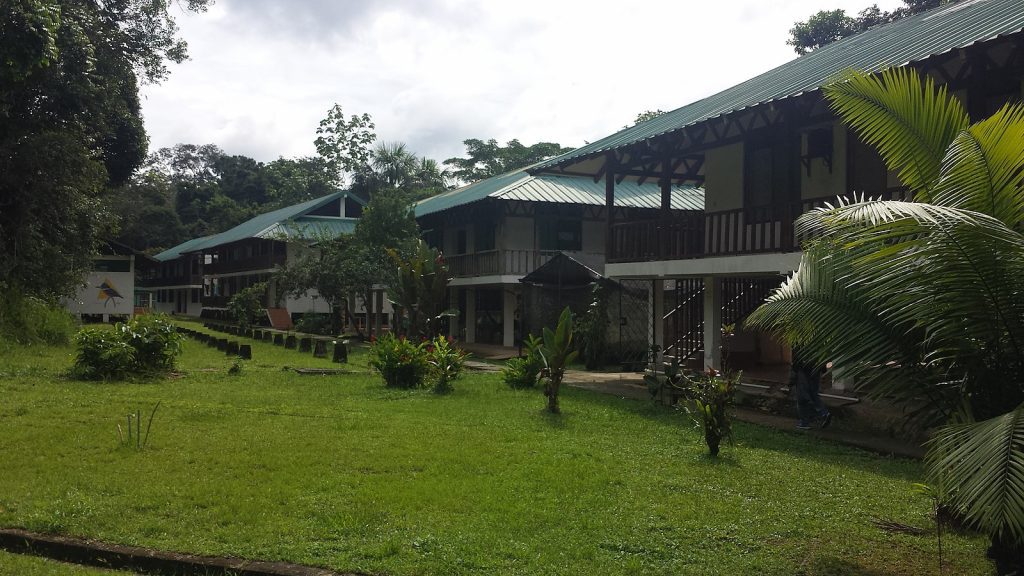
When planning a trip to Yasuni National Park, I highly recommend pre-booking an organized tour that includes essentials like accommodations, permissions, canoe transfers, and guides. Organizing all of this independently can be quite tricky, especially with the need for permits to access certain areas of the park.
During our visit, we found that accommodations in Yasuni mostly consist of luxury eco-lodges, which can be on the pricier side and often limited in availability. These lodges made our experience more immersive, offering everything from guided tours to canoe transport. Meals were included, and having an expert guide was incredibly valuable in exploring the park’s biodiversity.
While you could technically arrange your own transportation and stay with locals in Coca or with the Añangu community, I’d say this option is a bit more challenging, particularly for first-time visitors. The logistics of coordinating everything yourself can be overwhelming.
We chose the organized tour route, and it really helped make the experience seamless. It also reassured us that we were helping protect the park by supporting eco-friendly tourism practices. Booking through a tour provider ensured we had the right permits and access to knowledgeable guides who deepened our appreciation of Yasuni’s diverse ecosystem.
Weather in Yasuni National Park
Yasuni experiences three distinct seasons that shape its weather: wet, dry, and the in-between period. There is no definitive “best” time to visit, as each season has advantages and disadvantages.
Rainy Season
Visiting Yasuni during the rainy season was an interesting choice for us. While we expected heavy showers, the rain was usually short and sporadic, not continuous. One huge advantage of traveling during this period was the higher river levels. Canoe transportation was smooth, and we could explore deeper into the forest without any hassle.
The jungle during this time felt alive, with vibrant greenery, active wildlife, and an abundance of flowers and fruits. The temperatures averaged around 24 degrees Celsius (75 degrees Fahrenheit), which made the overall experience more comfortable. If you’re prepared for the humidity and occasional downpour, the rainy season really does offer an immersive and lush experience of Yasuni’s natural beauty.
Dry Season
The dry season in Yasuni National Park, lasting from December to March, offers relatively less rainfall compared to the rainy season, allowing for more uninterrupted activities. The reduced precipitation makes hiking and wildlife exploration more comfortable, as you’re less likely to encounter frequent rain showers.
However, there are a few trade-offs during this period. Lower river levels can make canoe navigation more challenging, potentially limiting access to certain parts of the park. Additionally, the temperature and humidity are significantly higher, often reaching around 38 degrees Celsius (100 degrees Fahrenheit), which can make outdoor activities more exhausting. Visitors should be prepared for the heat and carry plenty of water, sunscreen, and insect repellent to stay comfortable during their excursions. Despite these challenges, the dry season is still a great time to explore Yasuni’s incredible biodiversity and scenic beauty.
In-Between or Shoulder Season
The shoulder season from July to December in Yasuni National Park presents a mix of unpredictable weather patterns, with alternating periods of rain and sunshine and fluctuating temperatures. This transition period between the rainy and dry seasons can offer a more dynamic experience, as the forest’s ecosystems shift in response to the changing weather.
Visitors during this time should come prepared for variable conditions, packing both rain gear and lightweight clothing to stay comfortable in both sunny and wet environments. The unpredictability of the weather can add an adventurous element to the trip, as different wildlife species and plant life may emerge depending on the day’s conditions. While river levels may fluctuate, and temperatures may vary, the shoulder season offers a unique blend of both the lushness of the rainy season and the accessibility of the dry season.
Planning for these mixed conditions ensures that visitors can enjoy all that Yasuni has to offer, no matter the weather.
Have questions about your upcoming Galapagos trip? Join my Galapagos Reddit community and ask other travelers who recently visited the islands. Get up-to-date tips, real experiences, and honest advice from other travelers (I ban tour agencies and resellers).
Things To Do in Yasuni National Park
Forest Hiking
The best way for my wife and me to fully experience the wonders of Yasuni National Park was by setting off on the forest trails, where nature unfolds its secrets step by step. With the guidance of a knowledgeable native guide, we gradually became attuned to the sights, sounds, and rhythms of the rainforest. As we walked, our guide introduced us to basic tracking skills, teaching us how to observe the footprints and markings left by jungle creatures that ventured onto the trail before us.
For those who crave more adventure, like us, a night walk offers an exciting opportunity to explore the nocturnal forest, which comes alive with the sounds of creatures that remain hidden during the day. The thrill of discovering the nocturnal wildlife, such as frogs, insects, and other mysterious inhabitants of the forest, made this a truly memorable experience for my wife and me. The darkness, illuminated only by the faint beams of our flashlights, created an atmosphere of suspense and awe as we witnessed the rainforest in a completely different light.
Birdwatching
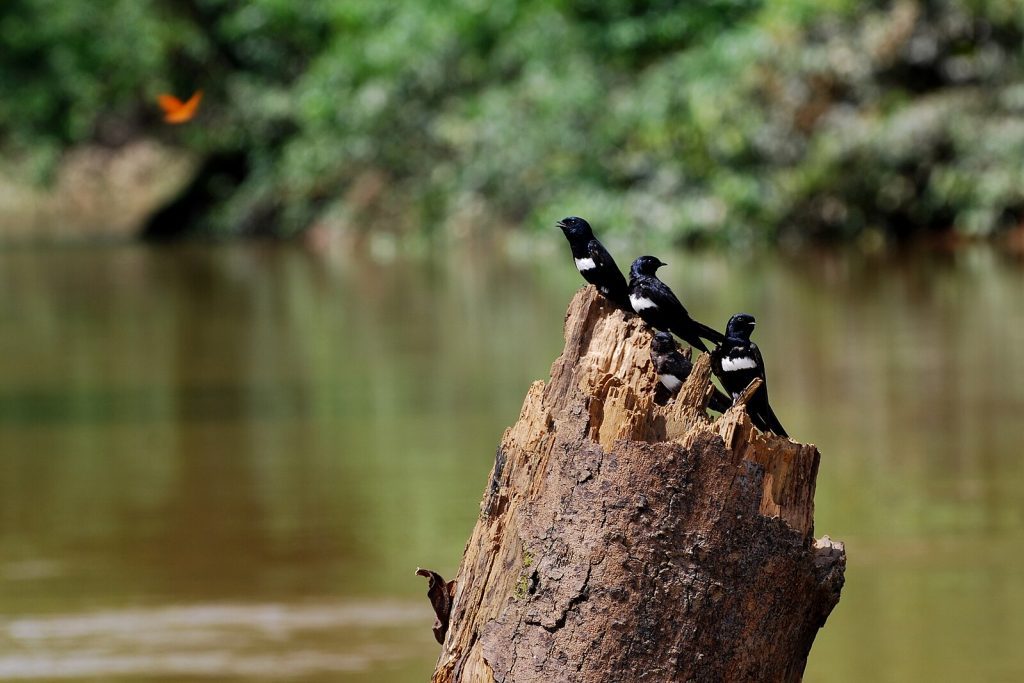
When we visited Yasuni National Park, the diversity of bird species truly amazed us. With over 596 species, it quickly turned us into enthusiastic birdwatchers, even though we weren’t seasoned in it. The vibrant colors and melodic calls of the birds were captivating, offering new discoveries at every turn.
One of the highlights was visiting the clay licks. Watching the macaws and parrots gather in large numbers to feed on the mineral-rich clay was mesmerizing. The vibrant plumage of the birds as they gathered was a sight we couldn’t look away from.
We also opted for a specialized birding guide from the lodge. Having a knowledgeable expert with us really elevated the experience. While I could spot some of the more common species, the guide helped uncover rare and elusive birds hidden in the dense forest canopy. Whether you’re a seasoned birder or just a nature lover, Yasuni’s birdwatching experience is unforgettable.
Wildlife Spotting
Yasuni National Park is an incredible destination for wildlife enthusiasts like us. We were absolutely mesmerized by the range of creatures we encountered, from tiny pocket monkeys to the majestic, yet elusive, jaguars and pumas. While spotting a big cat is rare, the lively monkeys more than made up for it. With 12 different species of monkeys, including howler and squirrel monkeys, we were constantly entertained by their playful antics during our hikes.
In addition to the primates, we were lucky enough to see a giant otter swimming along the river and even spotted a few capybaras grazing by the water’s edge. The diversity of mammals alone blew us away, from the wild boars to the more timid armadillos and deer.
One of the highlights of our canoe trips was seeing black caiman alligators lurking in the black water lagoons. Though we didn’t encounter any anacondas, knowing they might be hiding in the nearby streams added an element of excitement to the experience.
Yasuni’s aquatic life is equally impressive, with over 382 species of fish inhabiting its waters. The dynamic ecosystem truly makes Yasuni a paradise for nature lovers looking to immerse themselves in Ecuador’s Amazon region.
Canoeing
Canoeing in Yasuni National Park was one of the most unforgettable experiences for my wife and me. Gliding silently through the rivers, we felt fully immersed in the Amazon’s wildlife, surrounded by the natural beauty of the forest. The rivers serve as the forest’s highways, and as we paddled along, we noticed how seamlessly we could get close to the animals without disturbing them.
Every turn brought new opportunities to spot wildlife. We had our cameras and binoculars ready as we approached the riverbanks, where colorful parrots and macaws gathered, adding vibrant splashes of color to the scene. We even spotted a caiman lounging near the shore, basking in the sun, completely unfazed by our presence.
The serenity of canoeing through this rich ecosystem combined with the thrill of unexpected wildlife sightings made it an incredible Amazon safari that we’ll always cherish.
Discovering the Local Culture
Yasuni National Park is not just a haven for wildlife; it’s also a cultural gem, offering a rare glimpse into the lives of Ecuador’s indigenous peoples, like the Waorani and Kichwa. These communities have thrived in the Amazon for generations, living in harmony with nature and preserving their deep-rooted traditions that reveal a unique understanding of the environment.
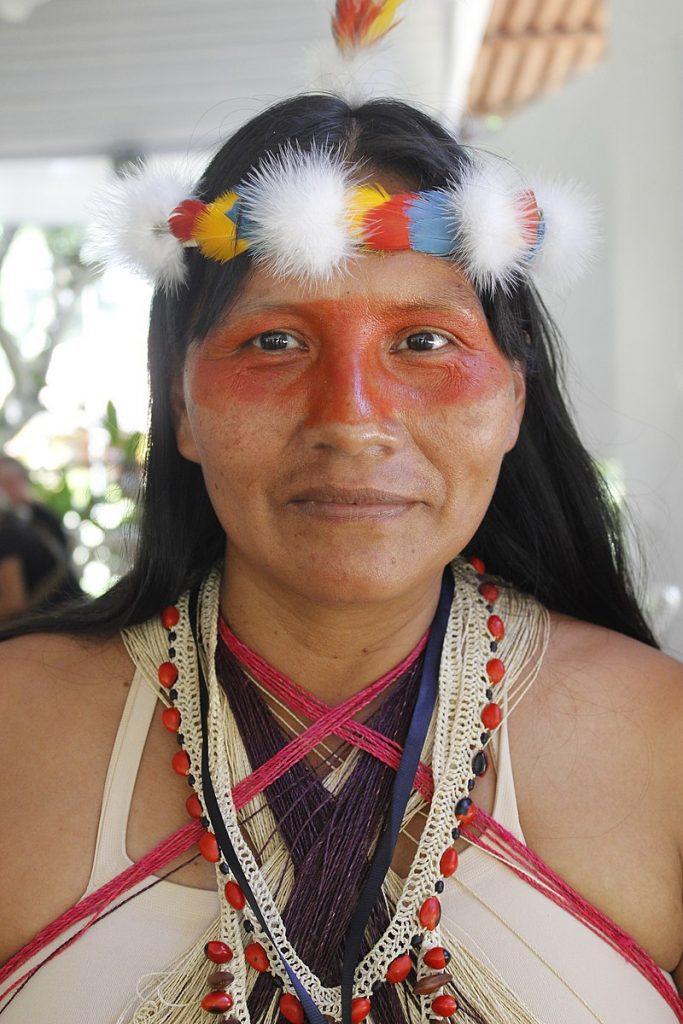
When we visited Yasuni, we had the incredible opportunity to immerse ourselves in their way of life. The locals welcomed us with open arms, sharing their traditions through music, dance, and spiritual ceremonies. One memorable highlight was being invited to taste their authentic cuisine, made from forest-sourced ingredients using traditional cooking methods. It was a rich culinary experience that reflected their deep connection to the land.
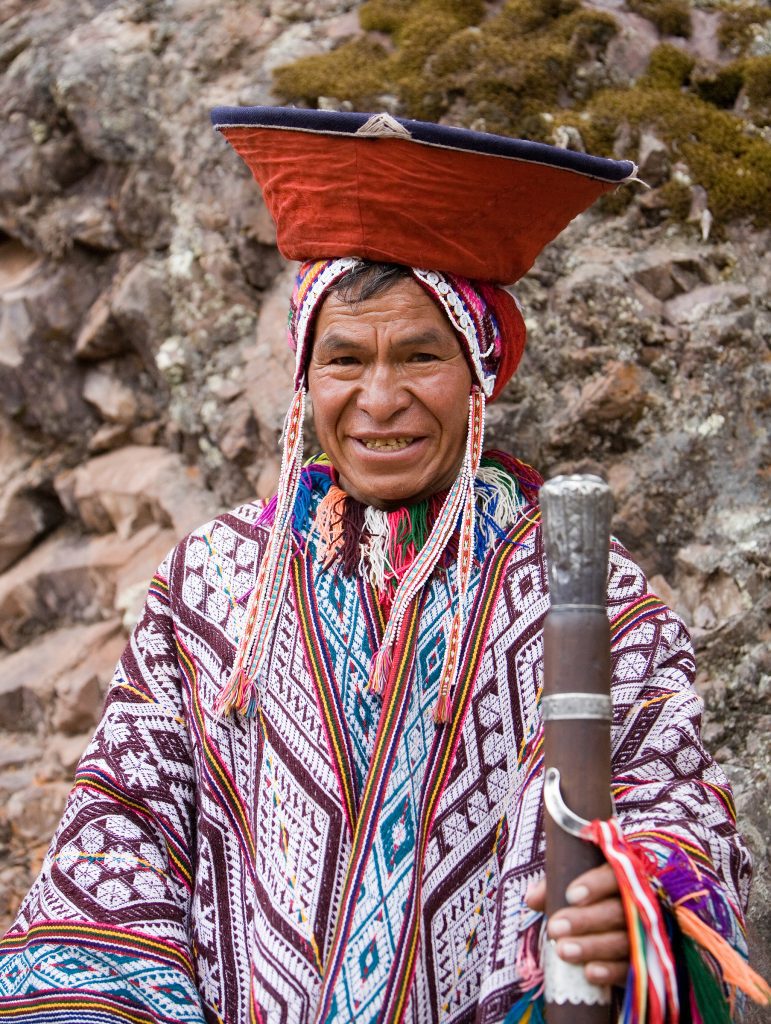
For me, this cultural exchange went beyond simply observing a different way of life. We had the chance to learn firsthand about their sustainable practices, ecological wisdom, and storytelling traditions. It was a humbling experience to witness how intricately their customs are tied to the forest and its preservation. Engaging with the indigenous peoples of Yasuni not only deepened our appreciation of the park’s natural wonders but also provided insight into a rich cultural heritage that coexists beautifully with the biodiversity of the region.
Ready to explore Yasuni’s breathtaking biodiversity and connect with its rich indigenous culture? Get a FREE personalized tour plan from my recommended local agency. It’s hassle-free, supports this blog, and contributes to protecting Ecuador’s natural treasures.
Our Yasuni National Park Experience
My wife and I had an unforgettable adventure in Yasuni National Park that truly immersed us in the Amazon. Booking this tour turned out to be a great decision, giving us the perfect blend of exploration, culture, and adventure. We kicked off the journey with an exciting kayak trip through the winding rivers of the Amazon. It was both exhilarating and peaceful as I paddled towards the first campsite, feeling the power of nature all around us.
The first night’s campsite was basic—just tents and a few simple facilities—but it allowed us to fully embrace the raw beauty of the rainforest. Sometimes stepping out of my comfort zone like that adds to the authenticity of the experience. Waking up to the sounds of the forest and enjoying breakfast by the river was incredibly serene and refreshing. I couldn’t help but feel at peace with the surroundings.
Our second campsite brought more comfort but still kept that adventurous feel. The wooden bridges connecting different parts of the camp added a unique charm, and the slightly more luxurious setup made us feel at home, even deep in the heart of the Amazon.
One of the highlights was the hike led by our local guide. I was amazed by the incredible biodiversity, and my wife and I learned so much about medicinal plants and wildlife from the guide. It gave us a deep appreciation for the environment and the traditional knowledge of the indigenous communities.
Overall, it was the perfect mix of adventure, nature, and culture. I can definitely say this journey went beyond just seeing sights—it was about connecting with Yasuni in a meaningful way.
Our third day at Yasuni National Park was nothing short of incredible. Starting with the stunning sight of yellow and blue macaws at Anaconda Lagoon, my wife and I were in awe. Even though we didn’t manage to spot the elusive anacondas or black caimans, paddling around the lagoon and soaking in the Amazon atmosphere was magical.
Switching to the motorized canoe for the return journey was a nice break, especially after I had kayaked against the current earlier. Visiting the local head community was one of the most memorable parts of the trip. Trying chicha, their traditional drink, and hearing the locals share their stories about life in the Amazon gave us a deeper connection to the place. It added a personal touch that made our adventure feel more meaningful.
The fishing didn’t go quite as planned due to the rain, but our guide turning the afternoon into a blowpipe lesson was a perfect way to embrace the downtime. I never thought I’d learn such a unique skill in such an authentic setting!
On our last day, we visited the Parrot Clay Lick, and seeing hundreds of macaws gathered together was simply breathtaking. It’s the kind of rare wildlife sighting that I’ll treasure forever.
Overall, our time at Yasuni was a perfect balance of adventure, culture, and nature—a truly once-in-a-lifetime experience that left a lasting impression.
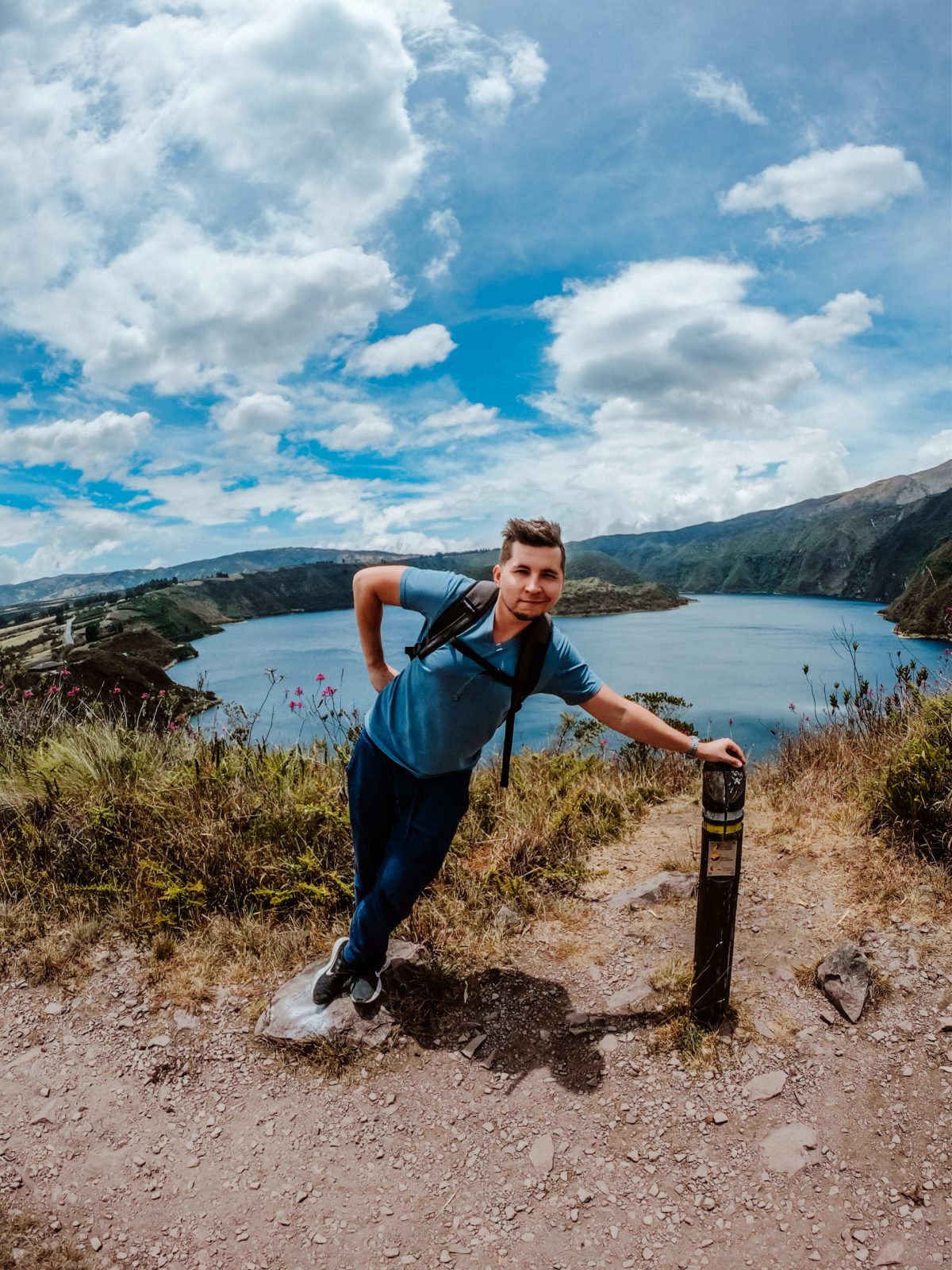
Planning trip to Ecuador?
My wife and I rented a car for 15 days and traveled from the northern part of Ecuador to the south, visiting amazing cities like Quito, Otavalo, Baños, Cuenca, and Guayaquil. Along the way, we explored iconic places such as Cotopaxi National Park, Quilotoa Lake, and many more breathtaking destinations.
Not many blogs cover traveling in Ecuador in detail, so I spent nearly three weeks creating this comprehensive Ecuador travel guide based on our trip. It’s packed with everything you need to know, and honestly, I consider it the best free travel guide about Ecuador out there.
If you’re planning a trip to Ecuador, don’t forget to use my link for discounted hotel prices through Booking.com. It’s a great way to support my blog while saving money on your accommodations!
Conclusion
Yasuni National Park is truly one of Ecuador’s most captivating destinations, offering a unique blend of breathtaking biodiversity and cultural immersion. From the colorful bird species soaring overhead to the elusive wildlife hidden in the forest, it’s a place that feels like another world. The deep-rooted traditions of the indigenous communities add a special layer to the experience.
Kayaking through serene rivers and witnessing the macaws at the parrot clay lick were some of the highlights for us. It was awe-inspiring to paddle through the Amazon’s waterways and see such vibrant wildlife up close.
For anyone looking to connect deeply with nature and experience the traditions of the indigenous people, Yasuni National Park is a must. The time we spent there was unforgettable, and it’s easy to see why it should be a highlight of any Ecuador itinerary!
Plan perfect trip to Ecuador & Galapagos
I spent countless hours researching everything about traveling to Ecuador, and I created this blog for fellow travel enthusiasts who want the best, most reliable information. But if you want to save time, we’ve partnered with the top local agency to plan your dream trip.

